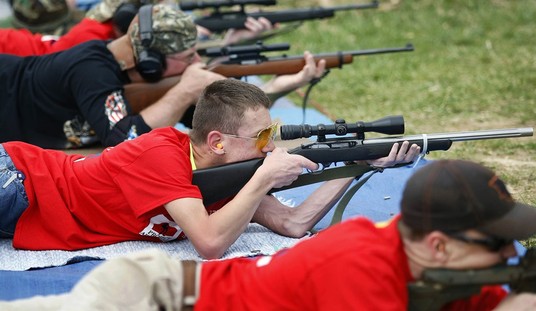This Week in American Military History:

Crazy Horse
June 20, 1941: The U.S. Army Air Corps is reorganized as the U.S. Army Air Forces (the predecessor to the U.S. Air Force).
June 22, 1944: Pres. Franklin D. Roosevelt signs the Servicemen’s Readjustment Act of 1944 – commonly known as the “G.I. Bill of Rights” – into law.
The law will literally change the socio-economic landscape of the country: putting teeth in the U.S. Veterans Administration, and providing education and work-training opportunities, home loans, farm and business startup capital, and other benefits for millions of soon-to-be-returning World War II veterans who otherwise would never receive such.
According to the U.S. Department of Veterans Affairs, “Before the war, college and homeownership were, for the most part, unreachable dreams for the average American.”
The G.I. Bill changed that.
“Millions who would have flooded the job market instead opted for education. In the peak year of 1947, veterans accounted for 49 percent of college admissions. By the time the original G.I. Bill ended on July 25, 1956, 7.8 million of 16 million World War II veterans had participated in an education or training program.”
June 23, 1903: The U.S. Army adopts the now-famous Springfield rifle (M1903) as the standard infantry weapon.
The bolt-action M1903 Springfield will be the primary American rifle carried by soldiers and Marines during America’s year (1918) in World War I. And in 1942, U.S. Marines fighting Japanese diehards on Guadalcanal are still armed with the ’03 Springfield as their primary weapon (though the semi-automatic M1 Garand had begun to replace the Springfield a few years earlier).
Coincidentally among the American combat units on “the Canal” is the fighting 5th Marine Regiment, which – 25 years earlier during the bloody battle of Belleau Wood – won for the entire Corps a reputation as some of the world’s best marksmen. And they did so of course with the ’03 Springfield.
U.S. Army Gen. John J. “Black Jack” Pershing, commanding general of the American Expeditionary Forces in World War I, will say, “The deadliest weapon in the world is a Marine and his rifle [meaning his ’03 Springfield].”
In his book, Guadalcanal Marine, author Kerry L. Lane will write: “The enemy on Guadalcanal would soon learn that a Marine marksman armed with a Springfield ’03 rifle is a dangerous man at a great distance.”
June 25, 1876: The battle of the Little Big Horn opens between a few hundred U.S. Army cavalry troopers under the command of Lt. Col. George Armstrong Custer and thousands of allied Lakota and Cheyenne Indian warriors under the command of Crazy Horse and Chief Gall.
Also known as “Custer’s last stand,” the battle will result in the encirclement and total annihilation of Custer and his vastly outnumbered command.
Though a dark day for the American Army, the battle represents multiple inescapable elements of American military tradition: The dashing, adventurous cavalry trooper riding off into the unknown, mistakes made, mistakes corrected, courage, sacrifice, our American Indian heritage, and the growing pains of America’s westward expansion.








Join the conversation as a VIP Member